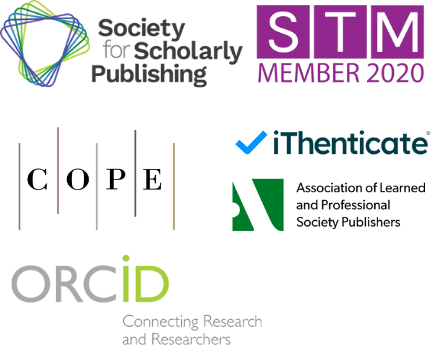Structural Engineering of Metal Sites for Catalysis
DOI:
https://doi.org/10.71222/9z5d7d54Keywords:
single-atom catalysts, metal-support interactions, coordination engineering, heterogeneous catalysis, structural design, catalytic sitesAbstract
Structural engineering of metal sites has emerged as a pivotal strategy for advancing heterogeneous catalysis, enabling unprecedented control over catalytic activity, selectivity, and stability. The precise manipulation of metal coordination environments, metal-support interactions, and spatial arrangements of active sites provides opportunities to tailor catalytic properties for specific reactions. Single-atom catalysts represent a frontier in this field, offering maximum atomic efficiency and unique electronic structures that differ fundamentally from nanoparticles and bulk materials. The coordination geometry, oxidation state, and local environment of isolated metal atoms critically determine their catalytic performance in reactions ranging from electrocatalytic carbon dioxide reduction to hydrogen peroxide synthesis. Dual-metal site architectures introduce additional complexity and synergy, enabling tandem catalytic processes and cooperative substrate activation. This paper examines the principles and strategies of structural engineering for metal catalytic sites, exploring the relationships between atomic-scale structure and catalytic function. Recent advances in synthesis methods, characterization techniques, and theoretical understanding have enabled rational design of metal sites with optimized properties. The integration of experimental observations with computational predictions continues to drive progress in developing next-generation catalysts for energy conversion, environmental remediation, and chemical synthesis applications.
References
1. X.-F. Yang, A. Wang, B. Qiao, J. Li, J. Liu, and T. Zhang, “Single-Atom Catalysts: A New Frontier in Heterogeneous Catalysis,” Accounts of Chemical Research, vol. 46, no. 8, pp. 1740–1748, 2013, doi: 10.1021/ar300361m.
2. L. He, C. Guan, D. A. Bulushev, and Q. Xiang, “Regulation of Metal‐Support Interaction in Single‐Atom Catalysis,” Small, p.2410976, 2024, doi: 10.1002/smll.202410976.
3. X. Shi, Z. Wen, Q. Gu, L. Jiao, H.-L. Jiang, and Haifeng Lv et al., “Metal–support frontier orbital interactions in single-atom catalysis,” Nature, pp.1-8, 2025, doi: 10.1038/s41586-025-08747-z.
4. K. Qi, M. Chhowalla, and D. Voiry, “Single atom is not alone: Metal–support interactions in single-atom catalysis,” Materials Today, vol. 40, pp. 173–192, 2020, doi: 10.1016/j.mattod.2020.07.002.
5. H. Zhang, H. Xu, C. Yao, S. Chen, F. Li, and D. Zhao, “Metal Atom–Support Interaction in Single Atom Catalysts toward Hydrogen Peroxide Electrosynthesis,” ACS Nano, vol. 18, no. 33, pp. 21836–21854, 2024, doi: 10.1021/acsnano.4c07916.
6. G. Xie, W. Guo, Z. Fang, Z. Duan, X. Lang, D. Liu, G. Mei, Y. Zhai, X. Sun, and X. Lu, “Dual‐Metal Sites Drive Tandem Electrocatalytic CO2 to C2+ Products,” Angewandte Chemie, vol. 136, no. 47, p. e202412568, 2024, doi: 10.1002/ange.202412568.
7. A. Wang, J. Li, and T. Zhang, “Heterogeneous single-atom catalysis,” Nature Reviews Chemistry, vol. 2, no. 6, pp. 65–81, 2018, doi: 10.1038/s41570-018-0010-1.
8. J. Li, M. F. Stephanopoulos, and Y. Xia, “Introduction: Heterogeneous Single-Atom Catalysis,” Chemical Reviews, vol. 120, no. 21, pp. 11699–11702, 2020, doi: 10.1021/acs.chemrev.0c01097.
9. G. Xie, Z. Zhu, D. Liu, W. Gao, Q. Gong, W. Dong, Y. Zhai, W. Guo, and X. Sun, “3D gas diffusion layer with dual-metal sites for enhanced CO₂ electrolysis to C₂⁺ products,” Angewandte Chemie, p. e202510167, 2025, doi: 10.1002/ange.202510167.
10. F. Ding, C. Ma, W.-L. Duan, and J. Luan, “Second auxiliary ligand induced two coppor-based coordination polymers and urease inhibition activity,” Journal of Solid State Chemistry, vol. 331, p. 124537, 2024, doi: 10.1016/j.jssc.2023.124537.
11. S. Ji, Y. Chen, X. Wang, Z. Zhang, D. Wang, and Y. Li, “Chemical Synthesis of Single Atomic Site Catalysts,” Chemical Reviews, vol. 120, no. 21, pp. 11900–11955, 2020, doi: 10.1021/acs.chemrev.9b00818.
12. X. Yu, Y. Zhang, L. Zhang, Q. Chen, Y. Zhou, J. Wang, Z. Wang, Y. Zhou, and X. Zhu et al., “Single-Atom Catalysts: Preparation and Applications in Environmental Catalysis,” Catalysts, vol. 12, no. 10, p. 1239, 2022, doi: 10.3390/catal12101239.
13. F. Ding, N. Su, C. Ma, B. Li, W.-L. Duan, and J. Luan, “Fabrication of two novel two-dimensional copper-based coordination polymers regulated by the ‘V’-shaped second auxiliary ligands as high-efficiency urease inhibitors,” Inorganic Chemistry Communications, vol. 170, p. 113319, 2024, doi: 10.1016/j.inoche.2024.113319.
14. W. Cheng, N. Gao, S. Cheng, Z. Sun, and H. Li, “Coordination environment design for enhanced catalytic performance of diamond-based nonmetallic and single-atom catalysts,” Journal of Materials Chemistry A, 2025, doi: 10.1039/d5ta06022b.
15. W. Sun, G. Liu, H. Zou, S. Wang, and X. Duan, “Site-designed dual-active-center catalysts for co-catalysis in advanced oxidation processes,” npj Materials Sustainability, vol. 3, no. 1, p.2, 2025, doi: 10.1038/s44296-024-00046-4.
Downloads
Published
Issue
Section
License
Copyright (c) 2025 Jian Liu, Anna Rodriguez, Kenji Yamamoto (Author)

This work is licensed under a Creative Commons Attribution 4.0 International License.


